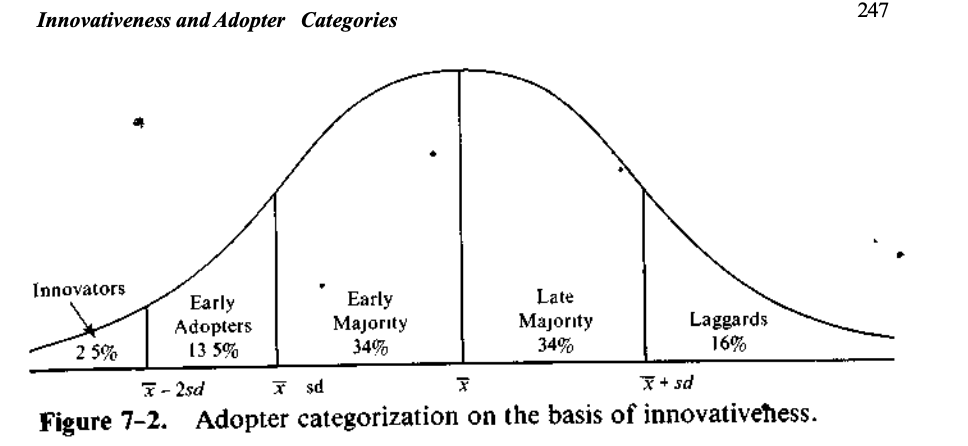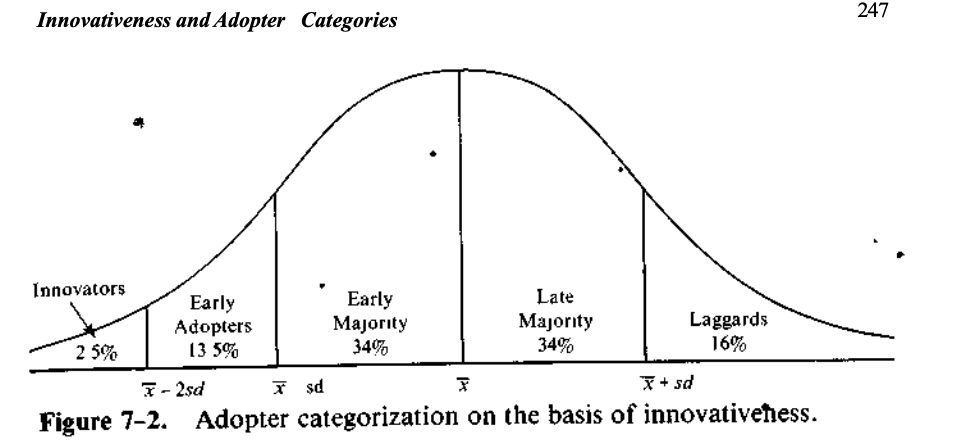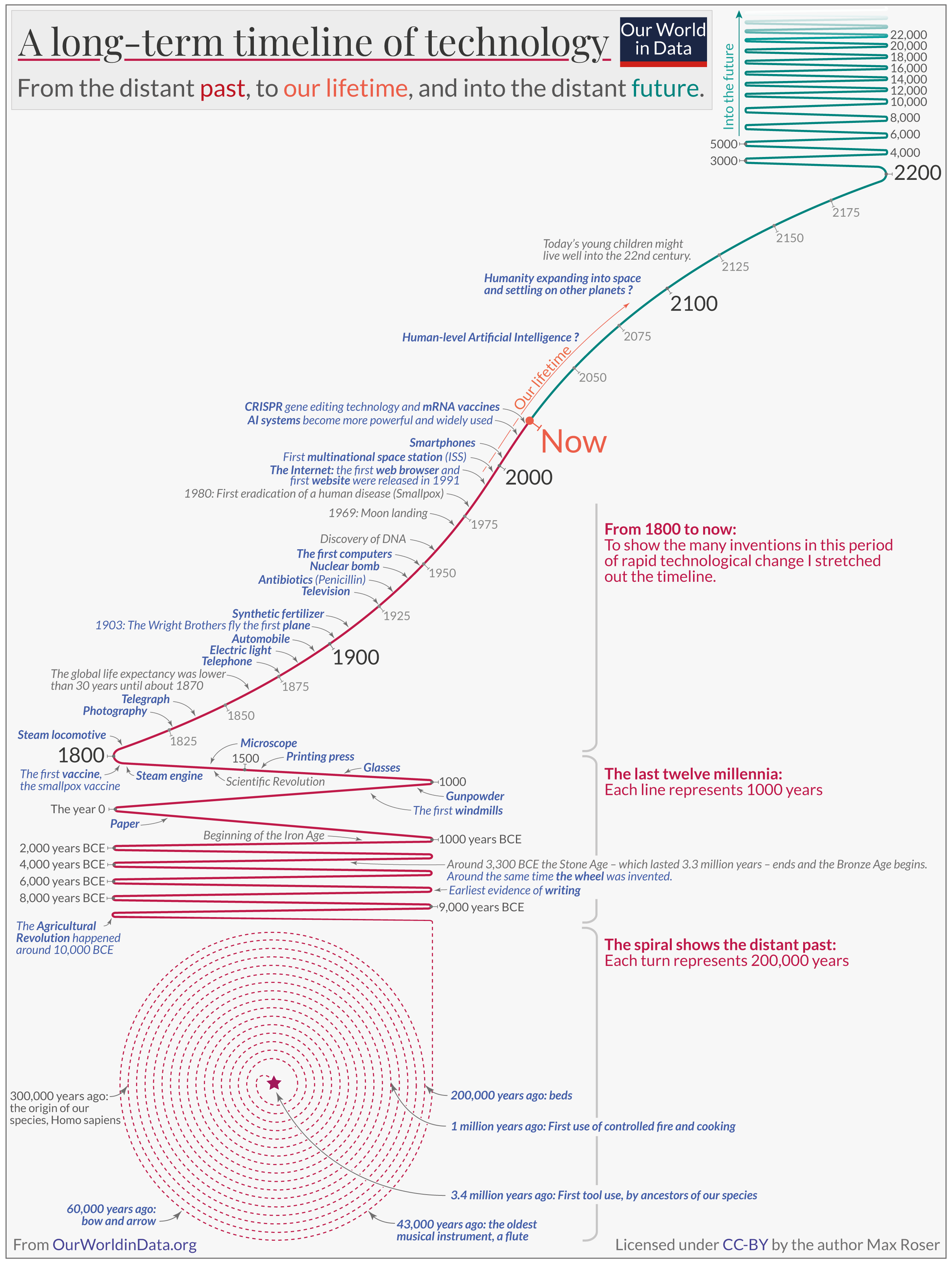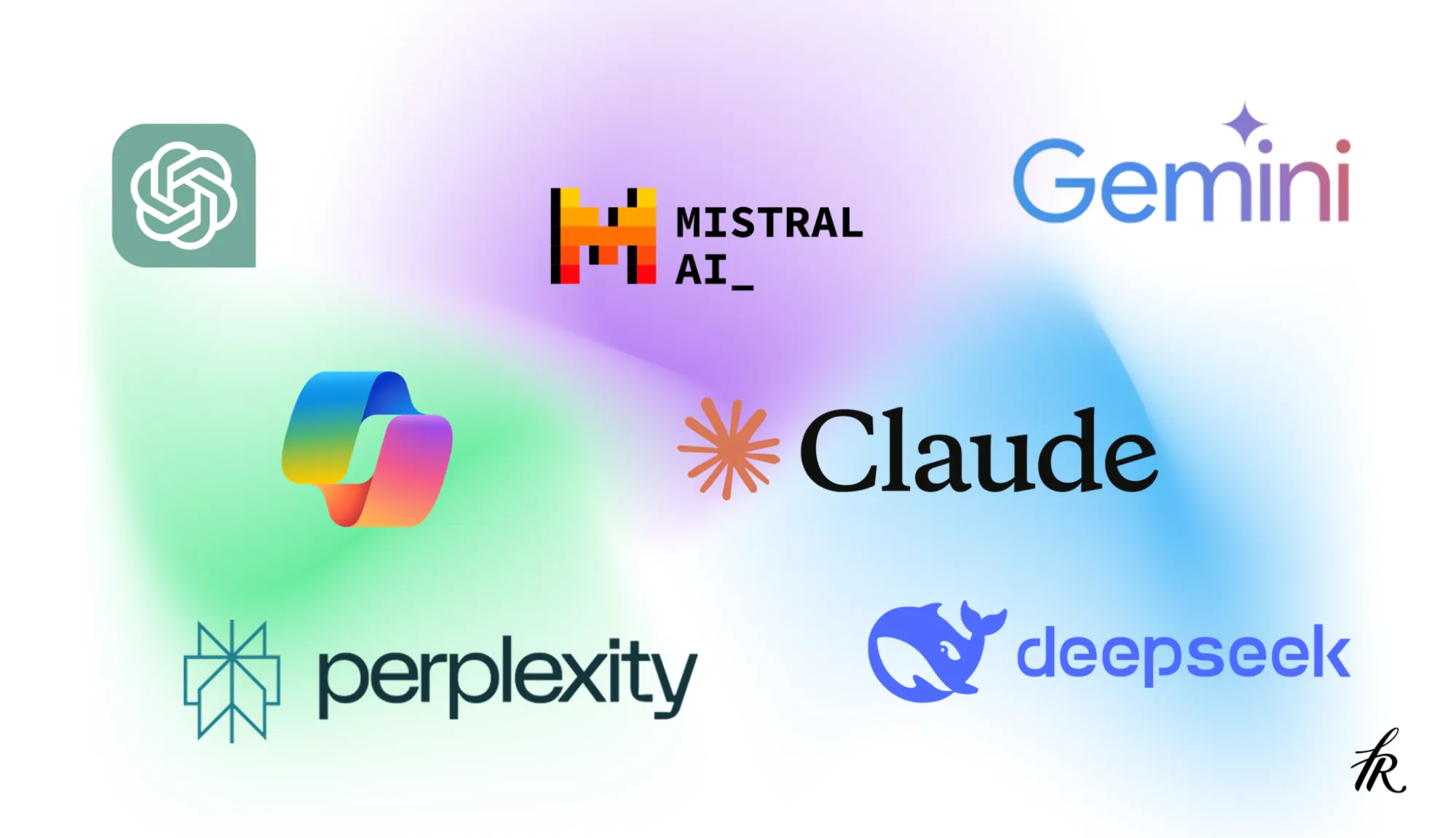Adoption of technology and AI
It's good and okay to be slow in adoption of technology, just be intentional about what you do adopt.

Once technology becomes accessible, people and organisations start to fold it into their lives and into their work. This happens at different speeds and with different degrees of success - but it seems to be both inevitable, and accelerating.
Depending on who you are, if you do not adopt certain new technologies and change with the times, big tech and big consultancies want you to think that you will fall behind. I’m here to tell you there is a lot of buffer if you’re not keenly involved in whatever technology is theoretically breaking through.
If most people or organisations are slow it’s okay, as long as you come up to speed eventually, it’s fine.
In 1995 a fella named Everett M. Rogers came up with a way to categorise how people responded to technological advances. See figure 7-2 below.

We can apply this model to the adoption of most advances in technology. If you are in the field of a given technology, you should be in the innovator or an early adopter segment.
- If you’re a phone company you should be innovating, if you are a call centre you should be an early adopter of new phone centre directed technology. But if you use a phone the way most people do, you can wait a while.
- If you are a baker, you might make new and exciting cakes, if you are a local cake fan you would want to be an early adopter. But if you just eat cakes on special occasions, you can wait until the new and exciting baked goods become common place.
In fact, waiting to be part of the early or late majority is likely to be less expensive and less risky. A lot of technologies or innovations never make it past early adopters. In more recent versions of figure 7.2 there’s ‘the great chasm’ between early adopters and the early majority, a drop-off here ideas go to die.
To adopt or not to adopt
Innovators and early adopters in a given space run a higher risk of failure or disappointment if the advancement they’re following doesn’t pan out, but if the technology is successful then they’re ahead of the curve. That’s the trade-off.
If we look at one of my new favourite graphs below (and assume it’s correct) we see that the rate at which technology is advancing is high. 100 years ago, the television was invented, around 10 years ago everyone seemed to have a smartphone, and within the last five years we’ve been able to edit genes and have AI girlfriends. Crazy.

The rate of advancement in the future, the gradient of the curve, is still steep. It doesn’t accelerate more quickly, but it’s still predicted to be rapid. The question then becomes, when is the right time to adopt different technologies? And, should I be worried about being left behind?
To many people or articles or companies want you to think that if you’re not immediately adopting things then you fall behind. But in reality, to answer these questions you have to know what matters to you.
For the things that matter to you, and only the things that matter to you, the right time to adopt new technologies is now.
If you're an innovator, you should already be working with them. If you're interested but not yet an early adopter, become one.
For example, if you're passionate about photography, you should be experimenting with different cameras and editing tools. If you're a social media influencer, you should explore new editing software and workflow automations.
But don't worry about being left behind with everything else.
For any technologies that you’re not interested in, being in the early or late majority is fine. Probably good even. If you're getting left behind, it'll become obvious, and you'll still have time to catch up. [Or be the person with an ancient flip phone in the smart phone era, irreverent but surviving]
Technology is a tool, not the solution
Technology itself is rarely the answer - it's how you apply it that matters. If you know what interests you, unless you're an innovator, it's unlikely to be the tool itself that drives you.
To continue previous examples, if you're passionate about photography - unless you manufacture cameras - you're probably not focused on being an early adopter of camera technology. You're interested in being on the leading edge of photography.
This means you might experiment with early adoption of new cameras, sure, but also editing innovations, printing technologies, new subjects or mediums for photographs, and or different story telling methods. You're using the technology to advance your real interest.
Too often we get caught up in the excitement of a new tool rather than how it serves our goals. The most successful adopters ask: ‘How does this technology help me achieve what matters to me?’ rather than just ‘Is this the newest thing?’ or ‘How can I use this tool because it seems like everyone else is?’
We see this playing out clearly with AI adoption. People are flocking to ChatGPT, Claude, and Perplexity simply because they can. There's nothing inherently wrong with that exploration, but it lacks intentionality.

A more effective approach is to identify your interests and needs, then determine how AI tools might advance them. Instead of thinking ‘Everyone's using AI, so I should too,’ ask ‘How could AI help me write better marketing copy?’ or ‘Can AI help me analyse my customer feedback more efficiently?’ or perhaps more personally ‘How could I use AI to better understand why I feel a certain way?’, or ‘How can I use AI to help me be more on time for getting coffee with Rhys?’
The difference may seem subtle, but it's crucial. One path leads to random experimentation that may or may not yield value. Where you end up thinking you’re using AI but really it’s a glorified search engine. The other creates targeted adoption that serves you.
The truly successful early adopters and early majority in AI aren't using it because it's novel - they're using it because it solves specific problems that matter to them. With AI, specifically, the exception to the rule is asking the AI what you should do to advance understanding, solve a problem, or expand your thinking.
Closing
If you know what’s interesting to you, what you want to improve or become better at, take a moment to write it down along side what you’re struggling with. Say something like ‘I want to write more essays and articles on my blog but I’m struggling to find the time, and I don’t have the headspace with everything else going on in my life. How can I use [insert technology you’re interested in] to help?’
This way you’re exploring usecases, applications of things that you’re interested in, rather than thinking about how cool or new the tools are. A hammer is good for hitting nails, very few people are interested in using it as a bottle opener or for plucking their eyebrows. So don’t feel bad if people are saying ‘I’m so advanced at using hammers’ – if you don’t need a hammer, forget about it, get back to your knitting.
